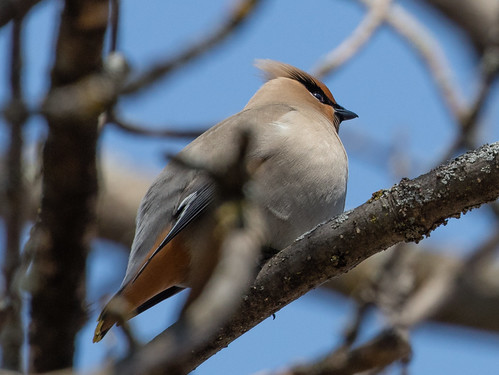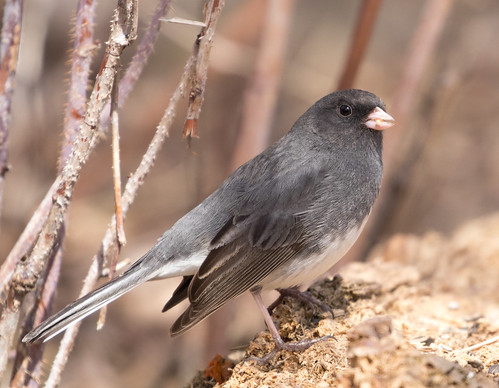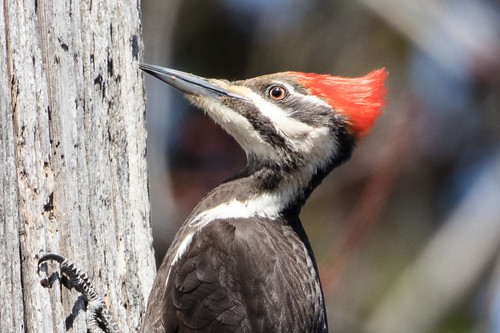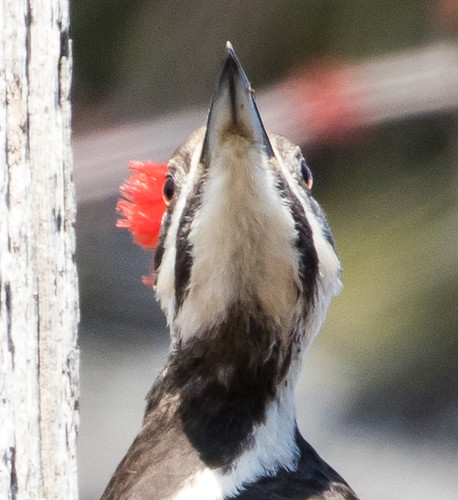 |
| Fox Sparrow |
One of my friends recently moved to Duluth from Bemidji. He
seemed utterly distraught on April 14, when the high here was 43 degrees but 78
in Bemidji. I don’t know if T.S. Eliot was thinking specifically about Duluth
when he wrote that April is the cruelest month. Other places may have it as
bad, but I don’t know how anyone can have it worse than those of us on the
north shore of the largest, coldest lake in the U.S., at least as far as frigid
temperatures so close to where people are getting ready to plant tomatoes.
The problem is our location on the north shore. We relish Lake
Superior’s influence in summer when we’re enjoying temps in the 60s or 70s while
it’s pushing three digits in Bemidji, or in winter when the lake modifies the
sub-zero temps of whatever large system is driving record lows away from the
lake. Balmy weather conditions in spring ride in on south winds—and everywhere
west of Duluth, those south winds carry the warmth from warmer places further
south. But Lake Superior chills those south winds significantly.
This year April was colder than average in a much wider
swath of the country than just Duluth, so sudden balmy conditions sent a huge
migration our way. Even as redpoll and Bohemian Waxwing numbers were at the
peak, a whole bunch of new migrants from the south were carried up on that
south wind. On Friday the 15th, Ryan Brady experienced an enormous migration
event in Herbster, Wisconsin, when he counted 8,979 birds of 64 species in just
5 hours. He posted his results on the Wisconsin Birding Facebook page. His top
ten species numbers were:
- 4,925 American Robins
- 1,232 Northern Flickers \
- 794 Rusty Blackbirds
- 769 Common Redpolls
- 212 Yellow-rumped Warblers
- 140 Common Grackles
- 72 Purple Finches
- 59 European Starlings (which Ryan noted were actually migrating)
- 58 Pine Siskins
- 44 Yellow-bellied Sapsuckers.
Ryan also listed a bunch of other cool birds that were actively
migrating: Belted Kingfishers, Wilson's Snipe, Brown-headed Cowbirds, Fox
Sparrows, Bohemian Waxwings, Evening Grosbeaks, White-breasted Nuthatches,
Lapland Longspurs, and a Trumpeter Swan. He counted 91 Long-tailed Ducks on the
lake and a dark-morph Red-tail among a decent raptor flight inland, too.
| Russ took this photo of me in my Bruce Pomeroy Photo Blind a few years ago. |
For a couple of hours that day, I sat out in what I call my
Bruce Pomeroy Photo Blind: a cool camouflage tent given to me by a friend,
testing out my new camera on juncos and a briefly cooperative Pileated
Woodpecker.
Migration through Duluth was more pronounced closer to the tip of
the lake, at Park Point, and our hawk count at West Skyline has been producing
hundreds of raptors—mostly Bald Eagles and Red-tailed Hawks—but once birds
clear the lake, migration trends north, not east, so I don’t see actual
migration events from my own backyard in spring very often. All weekend I kept
seeing good birds—redpolls and Bohemian Waxwings lingering as robins and Song
Sparrows sang their hearts out. Kinglets, Brown Creepers, and Fox Sparrows were
among the typical April migrants. And the neighborhood’s squawking Merlins were
a noisy reminder that birders aren’t the only ones enjoying the abundance of
new birds.
 |
| Bohemian Waxwing |
 |
| Song Sparrow |
April may be the cruelest month weather-wise, and that
cruelty can extend to birds that get slammed by nasty weather after arriving on
a false promise of spring or get gobbled up by a hawk or falcon. But April is
also a rich month, full of promise and filled with birds. And week by week,
April gets better and better, but unlike May, when April is over, the very best
of spring migration is yet to come.


